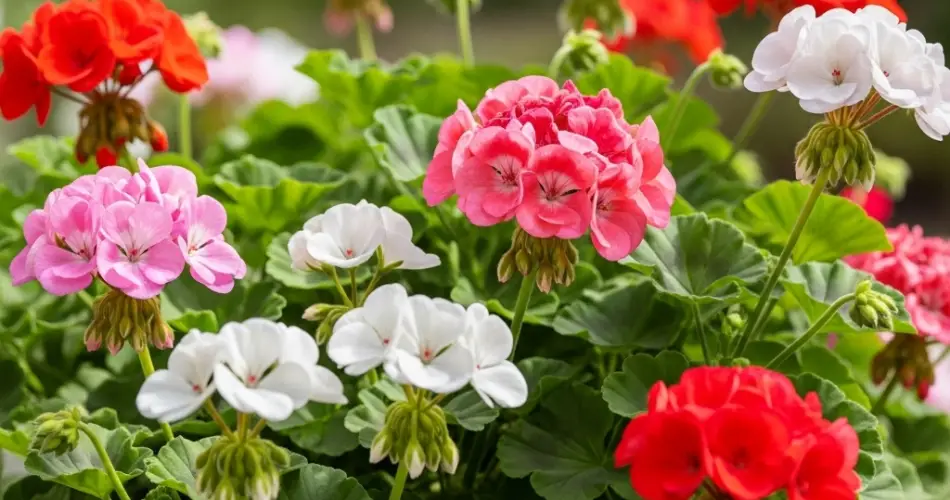If you’re someone who struggles to keep plants alive, you’re not alone. Many beginners give up on gardening after a few failed attempts, especially when houseplants wither or flowers stop blooming. But there’s good news—geraniums might just be the plant that changes everything. Hardy, forgiving, and beautifully blooming, geraniums are ideal for even the most inexperienced plant owners.
With the right guidance and minimal effort, you can grow healthy, flowering geraniums indoors or outdoors. Here’s how to succeed with geraniums—even if you’ve killed every plant before.
Why Geraniums Are Perfect for Beginners
Geraniums (Pelargonium species) are among the most beginner-friendly plants available. They tolerate inconsistent care, resist pests, and bloom generously with just basic attention. These cheerful plants come in a range of colors—red, pink, white, and purple—and can thrive in pots, window boxes, garden beds, or sunny balconies.
Key benefits for beginners:
-
Drought-tolerant once established
-
Bloom for months with minimal effort
-
Grow well in containers and small spaces
-
Easy to propagate for more plants
If you’ve failed with finicky houseplants before, geraniums offer a much gentler learning curve.
Start with the Right Type of Geranium
There are different kinds of geraniums, so choosing the right one can make a big difference for beginners:
-
Zonal geraniums (Pelargonium x hortorum): These are the most common and easiest to grow, featuring round, patterned leaves and bold flower clusters.
-
Ivy-leaved geraniums (Pelargonium peltatum): These have trailing vines, perfect for hanging baskets or balcony planters.
-
Scented-leaf geraniums: Known more for their fragrant leaves than their flowers, they add a lovely aroma to your garden or windowsill.
Zonal geraniums are especially good for novices—they’re sturdy and bloom abundantly with very little fuss.
Choosing the Right Location
Geraniums love sunlight. Whether indoors or outside, make sure they get at least 4–6 hours of direct sun daily. A sunny windowsill, balcony, or patio is ideal. Without enough sunlight, they’ll become leggy and stop blooming.
If growing indoors, a south- or west-facing window is best. Outdoors, place them where they’ll get bright morning sun and some afternoon shade if your climate is particularly hot.
Use Well-Draining Soil and the Right Pot
Geraniums hate sitting in wet soil. Always use:
-
A container with drainage holes
-
A light potting mix (ideally one labeled for flowers or container gardening)
-
Optional: Add perlite or coarse sand to improve drainage
Avoid heavy garden soil, which retains too much moisture and can cause root rot.
Watering: Less Is More
One of the most common reasons beginners kill plants is overwatering. Geraniums actually prefer slightly dry conditions between waterings.
-
Let the top inch of soil dry out before watering again.
-
Water deeply, then allow excess to drain away.
-
Never let the pot sit in a saucer of water—empty it after watering.
In winter, water even less frequently, as the plant’s growth slows down and excess moisture can harm the roots.
Feeding Your Geraniums
To keep geraniums blooming for months, feed them regularly:
-
Use a balanced liquid fertilizer (10-10-10 or 20-20-20) every 2–3 weeks during the growing season (spring through early fall).
-
Stop fertilizing in winter if your plant is resting.
Don’t overdo it—too much fertilizer can encourage leaf growth at the expense of flowers.
Pruning and Deadheading
To encourage bushier growth and more blooms:
-
Pinch back the tips of stems every few weeks in early growth stages.
-
Deadhead faded flowers (snip them off at the stem) to signal the plant to produce new blooms.
If your plant becomes leggy, cut it back by one-third to promote fresh growth.
Propagation Made Easy
One of the joys of geraniums is how easy they are to multiply. Just take a cutting:
-
Snip a healthy stem 4–6 inches long just below a node.
-
Remove lower leaves and dip the end in rooting hormone (optional).
-
Place it in moist soil or water until roots form (1–2 weeks).
-
Transplant into a pot and care for as usual.
You can grow a collection of geraniums from just one plant over time.
Troubleshooting Common Issues
Yellow leaves: Often a sign of overwatering. Let the soil dry out more between waterings.
No blooms: Not enough light or too much nitrogen. Move to a sunnier spot and reduce feeding.
Leggy stems: Trim back and provide more sunlight.
Pests (like aphids or spider mites): Spray leaves with a gentle solution of water and dish soap or use neem oil.
Winter Care
In colder climates, geraniums are treated as annuals unless you bring them indoors. To overwinter:
-
Trim them back and place them in a sunny window.
-
Water sparingly and don’t fertilize until spring.
-
Or, store bare-root plants in a cool, dark place (like a basement) and replant in spring.
Conclusion
Even if you’ve struggled with plants in the past, geraniums are forgiving and fun to grow. With their bright flowers, easy care routine, and forgiving nature, they make the perfect starter plant for anyone who wants to turn their black thumb green.
Start small with one plant in a pot and you might be surprised at how quickly you gain confidence—and a passion for growing more. Geraniums truly are the gateway plant for beginner gardeners.



